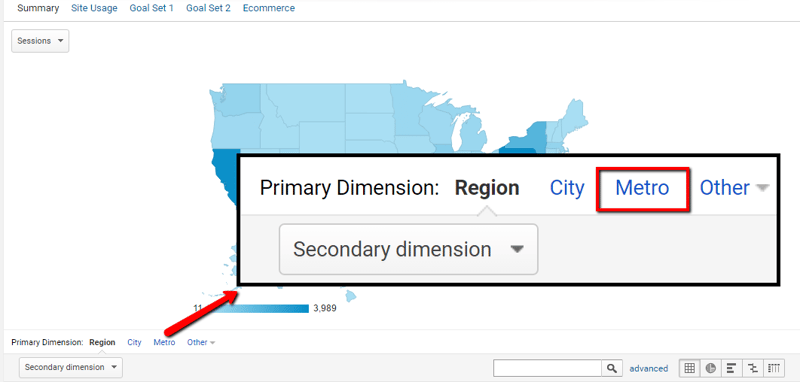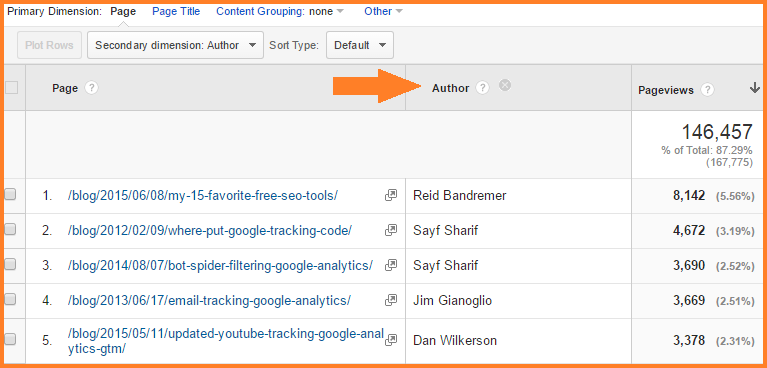The Value of 'Secondary Dimensions' in Google Analytics: Thorough Analysis
The Value of 'Secondary Dimensions' in Google Analytics: Thorough Analysis
Blog Article
Browsing the Midst of Second Dimension in Google Analytics: An In-depth Exploration on Its Performance
In the world of digital analytics, the intricacies of information analysis typically hold the key to unlocking useful understandings. Within the large toolkit of Google Analytics exists a feature that works as a surprise treasure for those that seek a much deeper understanding of individual behavior and website performance. Second dimensions, though relatively simple in the beginning glance, harbor a wealth of untapped possible waiting to be utilized. As we begin on this trip to discover the nuanced capability of second dimensions, we will reveal exactly how this function can illuminate patterns, unveil relationships, and inevitably lead the method for informed decision-making in the electronic landscape.
Understanding Secondary Dimensions in Google Analytics

Comprehending how second measurements work is critical for leveraging the complete power of Google Analytics. These measurements assist you respond to extra complicated questions regarding customer actions and the effectiveness of your website material and advertising and marketing efforts. For instance, you can utilize secondary measurements to examine which browsers or tools are most frequently used by visitors that buy, or to contrast the bounce prices of different web traffic sources. By integrating key metrics with additional measurements, you can gain important understandings that drive notified decision-making and optimization methods - what is a “secondary dimension” in google analytics?.
Leveraging Additional Dimensions for Information Evaluation
Building upon the foundational understanding of how second dimensions boost data evaluation in Google Analytics, the use of these added layers of information comes to be extremely important in removing important insights for notified decision-making and optimization techniques. By leveraging additional dimensions, analysts can dig deeper into the performance metrics by including more context to the main dimensions, therefore uncovering concealed patterns and correlations that may not appear at initial look. This deeper level of evaluation allows organizations to much better comprehend customer habits, determine fads, and identify locations for improvement.
Furthermore, additional dimensions give a more extensive view of the information, enabling for segmentation based upon various parameters such as demographics, tools, web traffic resources, and a lot more. This division assists in an extra granular evaluation, allowing services to tailor their methods and projects to specific audience sections for improved targeting and personalization. Essentially, the calculated usage of second measurements encourages companies to make data-driven decisions that drive development and success in the electronic landscape.
Advanced Methods for Second Dimension Application
Checking out elaborate techniques to harness the full capacity of second dimensions in Google Analytics raises the deepness and sophistication of data analysis for tactical decision-making. One sophisticated technique for carrying out secondary dimensions is using personalized measurements. By specifying custom measurements, customers can section information better to obtain even more specific insights right into individual behavior, such as tracking interactions with certain components on a webpage or checking the performance of a specific marketing project. Another innovative strategy is the use of regex (normal expressions) within secondary dimensions. Regex enables even more flexible and effective pattern matching, enabling individuals to create complicated filters for data evaluation. In addition, combining secondary measurements with sophisticated segments can supply even more granular insights by applying multiple layers of segmentation to the data. This method permits for a much deeper understanding of individual actions based on various criteria concurrently. Carrying out these sophisticated methods for second dimensions in Google Analytics empowers individuals to carry out much more sophisticated evaluation and make data-driven choices with precision.
Interpreting Insights Via Second Dimensions

When translating understandings via additional dimensions, it is necessary to consider the context of the information and how various dimensions connect with each various other. For instance, understanding which details traffic resources bring about greater conversion prices or recognizing which devices customers choose for making acquisitions can supply workable insights for enhancing advertising campaigns and enhancing overall site efficiency. By thoroughly taking a look at the information with additional dimensions in mind, organizations can make educated choices that drive meaningful outcomes and enhance their electronic presence.
Enhancing Efficiency With Secondary Dimensions

One essential method to enhance performance with additional dimensions is by segmenting information much more granularly. This allows you to isolate specific variables that may be affecting your metrics and gain a much better understanding of what drives success or failure in your digital initiatives. For instance, by combining second measurements such as 'device group' and 'landing web page,' you can determine which device types are most efficient for specific touchdown web pages, enabling you to tailor your approaches appropriately.
Additionally, using additional measurements can help you determine fads, patterns, and relationships that might not appear when examining data with key dimensions alone. This deeper level of evaluation can result in even more informed decision-making and inevitably boost the general performance of your web site or digital advertising projects.
Conclusion
In verdict, secondary measurements in Google Analytics play an important duty in enhancing data analysis and providing deeper understandings right into internet site efficiency. By making use of advanced methods and analyzing the data effectively, organizations can maximize their methods and enhance total performance. Understanding the functionality of second measurements is vital for making notified choices and driving success in the digital landscape.
By leveraging second measurements, experts can delve much deeper into the efficiency metrics by adding more context to the key measurements, thus uncovering concealed patterns and correlations that may not be obvious at first glance. One advanced technique for executing additional dimensions is the usage of personalized dimensions.Having actually mastered advanced methods like Find Out More custom-made measurements and check my blog regex for additional dimension implementation in Google Analytics, the following critical step is analyzing the valuable insights derived with these sophisticated data division methods. Analyzing insights through second dimensions involves analyzing the relationships between the main and additional dimensions selected, uncovering patterns, fads, and relationships that might not be promptly evident when looking at the data in its whole.When analyzing understandings through secondary measurements, it is vital to think about the context of the data and exactly how various dimensions communicate with each various other.
Report this page